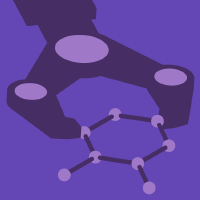Topic Menu
► Topic MenuTopic Editors


Advances in the Metal-Based Hybrid Process of Additive Manufacturing
Topic Information
Dear Colleagues,
Due to its design freedom, additive manufacturing (AM) is widely adopted for manufacturing components for automotive to aerospace applications, food 3D printing, and healthcare applications. Compared to the conventional subtractive manufacturing methods, AM is versatile and satisfies the criteria for sustainability through net-zero manufacturing methods. Nowadays, researchers and industrialists are focused on an advanced option of AM: hybrid additive manufacturing. Hybrid additive manufacturing (hybrid AM) refers to multimaterial, multistructural, and multifunctional printing, as well as hybrid techniques and equipment. The hybrid capabilities of AM are rewriting material design norms and bringing a new dimension to designs for the additive manufacturing (AM) approach. Hybrid AM processes combine AM with one or more secondary techniques or energy sources that are completely linked and influence component quality, functionality, and process performance synergistically. Subtractive and transformational manufacturing methods such as machining, remelting, peening, rolling, and friction stir processing (FSP) are examples of secondary processes and energy sources. New economic and environmental tools, as well as sensor technologies that better support hybrid processing, are needed as interest in hybrid AM rises. Hybrid AM has entered the next evolutionary stage in additive manufacturing, with the potential to alter the way that items are manufactured. This Topic primarily focuses on the following areas of hybrid AM, but is not limited to:
- Hybrid additive manufacturing process
- Hybrid additive manufacturing machines
- Friction stir additive manufacturing
- Ultrasonic vibration-assisted additive manufacturing
- Multi-material 3D printing
- Multi-structural 3D printing
- Hybrid post-processing, preprocessing, and in situ processing for additive manufacturing
- Hybrid 3D-printed materials structure
- Nontraditional additive manufacturing process
Dr. Sasan Sattarpanah Karganroudi
Dr. Dhanesh G. Mohan
Topic Editors
Keywords
- hybrid additive manufacturing
- multi-material 3D printing
- multi-structural 3D printing
- nontraditional additive manufacturing
Participating Journals
| Journal Name | Impact Factor | CiteScore | Launched Year | First Decision (median) | APC |
|---|---|---|---|---|---|

Alloys
|
- | - | 2022 | 15.0 days * | CHF 1000 |

Metals
|
2.9 | 4.4 | 2011 | 15 Days | CHF 2600 |

Micromachines
|
3.4 | 4.7 | 2010 | 16.1 Days | CHF 2600 |

Nanomanufacturing
|
- | - | 2021 | 23 Days | CHF 1000 |

Processes
|
3.5 | 4.7 | 2013 | 13.7 Days | CHF 2400 |
* Median value for all MDPI journals in the second half of 2023.

MDPI Topics is cooperating with Preprints.org and has built a direct connection between MDPI journals and Preprints.org. Authors are encouraged to enjoy the benefits by posting a preprint at Preprints.org prior to publication:
- Immediately share your ideas ahead of publication and establish your research priority;
- Protect your idea from being stolen with this time-stamped preprint article;
- Enhance the exposure and impact of your research;
- Receive feedback from your peers in advance;
- Have it indexed in Web of Science (Preprint Citation Index), Google Scholar, Crossref, SHARE, PrePubMed, Scilit and Europe PMC.

